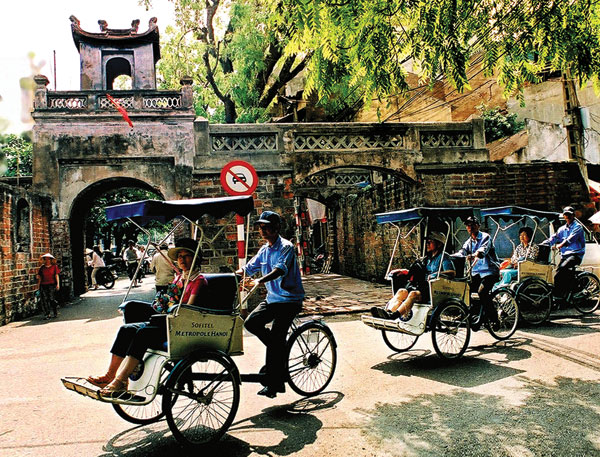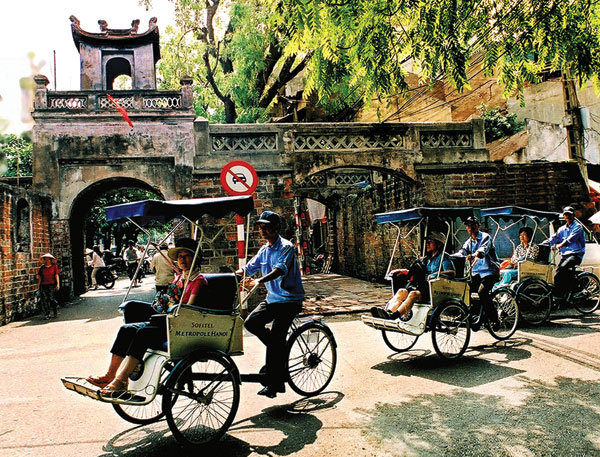(No.1, Vol.7,Feb-Mar 2017 Vietnam Heritage Magazine)

Photo: Hoang Minh

Photo: Ngo Du
Quan Chuong is one of the Eastern gates of the earthen fortification that surrounded the Thang Long Citadel. Built in the 10th year of Le Canh Hung reign (1749) and renovated in the 3rd year of Gia Long reign (1817), it remains intact until today. This is one of the 21 gates of the old Thang Long Citadel, a national relic, ranked in 1995.
Today, almost all the other gates are only remembered by names borne by some geographical entity that stands on their place, or by historical records. For example, Cho Dua Gate is now the name of a bazaar, and Cau Giay Gate was known as the name of a brick bridge that crossed To Lich River, without having anything that reminded one of the ancient structures. Fortunately, Hanoi still has an almost intact gate; Quan Chuong.
Located at an end of O Quan Chuong Street, Quan Chuong Gate opens to Red River dykes and Hang Chieu Street behind it. It has cupola form, with a watch tower at the top. The palate form gate used to have double thick wooden doors which closed at night and opened early in the morning for people to go into and out of town.
Through ups and downs of history, Quan Chuong Gate still stands solemnly, preserving for Hanoi a simple but precious structure that witnessed times of peace and war. On the left side, it has a stele carved in 1882 with instructions from the City Governor Hoang Dieu ordering the gatekeepers not to extort funeral processions that passed the gate. Besides the large passage, the gate also has two small doors on the sides. Above the big door is written ‘Thanh Ha Gate’. That was the gate’s original name, because it opened to Thanh Ha Village on the bank of To Lich River, where it poured into Red River. The village covers the area of Hang Chieu, Thanh Ha and Dao Duy Tu Streets today.
The gate took the form we see today in 1817 during a major reconstruction. At the time, it was still called Thanh Ha Gate. Quan Chuong was the rank of an officer in charge of the city guards. On Nov 20, 1873, the French attacked Hanoi for the first time. Warships coming upstream from the sea brought fire power and strong troops, who immediately stormed the gate. Quan Chuong and over 100 city guards fought fiercely until the last one fell. Since then, Thanh Ha Gate has been named Quan Chuong Gate.
Having taken Hanoi, the French ordered the destruction of old structures to expand the city. Almost everything around was leveled. But the Quan Chuong canton chief Dao Dang Chieu had led the local people’s campaign against the destruction of the gate. They resolutely refused signing the agreement which would have made the destruction legitimate. It’s because of their strong will that the city retained an invaluable relic of architecture.
In 2009, the United States donated $74,500 to Vietnam for the preservation of Quan Chuong Gate.
US Ambassador to Vietnam Michael W. Michalak said, ‘Quan Chuong Gate is an astoundingly beautiful architectural relic being eroded by time. It is not simply a landmark gate of the ancient Thang Long citadel, but also a symbol of the spirit and resiliency of the people of Hanoi.’

